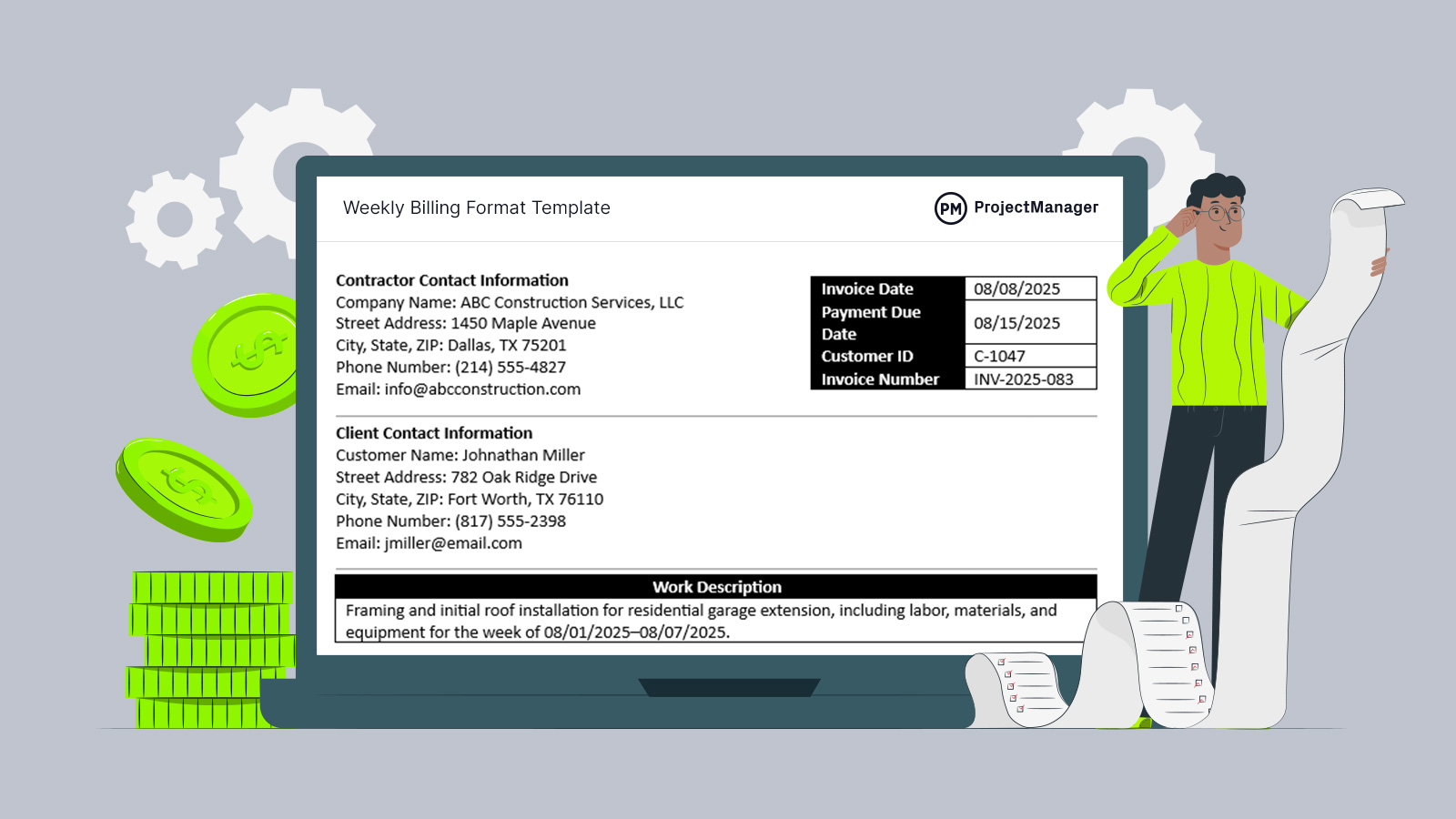The weekly billing format is a structured document used to record and track billable work on a week-by-week basis, making it easier to maintain accuracy and transparency in invoicing. When businesses organize billing information into a clear format, they can ensure that both clients and internal teams stay aligned on work completed, hours logged and payment expectations. A free download for Word allows users to start quickly without having to build a format from scratch.
Using a weekly billing format can streamline financial recordkeeping, improve cash flow and reduce disputes by providing consistent and easy-to-read documentation. Whether for freelancers, contractors, or service providers, this format helps maintain a steady billing cycle that supports operational stability. Download this free weekly billing format for Word to add the flexibility of customization, so users can tailor it to match branding, specific fields or industry requirements.
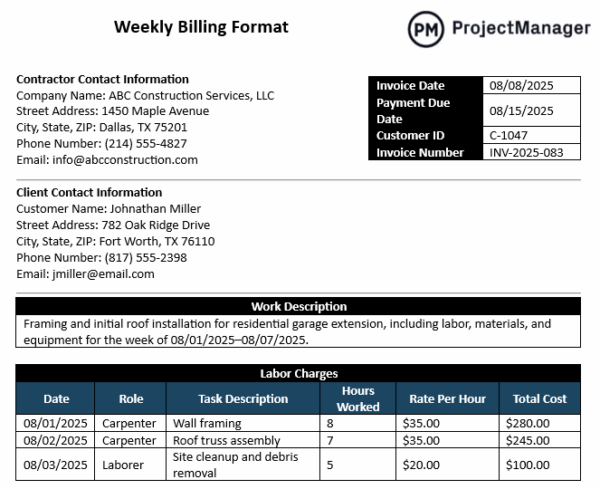
Why Use a Weekly Billing Format?
Using a weekly billing format ensures that payment requests are sent out regularly, reducing the risk of delayed income. It also provides clients with frequent, transparent updates on work performed, which can strengthen trust and improve working relationships. By tracking billable hours and expenses weekly, businesses can maintain tighter control over cash flow and quickly identify discrepancies before they become major issues.
Another advantage of a weekly billing format is that it keeps both service providers and clients accountable. Regular invoicing minimizes the likelihood of misunderstandings about project scope or work completed. It also spreads out billing rather than creating large, infrequent invoices that can be harder for clients to manage. This consistency can lead to faster payments and a more predictable financial cycle.
Project management software simplifies the weekly billing format by organizing all tasks, deadlines and billable hours in one place. It ensures that billing aligns with actual project progress, reducing errors and disputes. By tracking deliverables alongside time spent, teams can confidently prepare invoices at the end of each week. This structured approach naturally connects to tools like a Gantt chart, where schedules and billing timelines can be managed together for full transparency.
ProjectManager streamlines the weekly billing format by connecting financial tracking to your project schedule. Its online Gantt chart lets you visualize tasks, milestones and deadlines while linking them to billing cycles. This integration ensures that every invoice reflects actual work completed on time. With real-time updates, you can adjust billing dates as projects shift, keeping finances accurate and clients informed. The combination of task management, scheduling and billing in one platform eliminates duplicate work and boosts efficiency. Get started with ProjectManager today for free
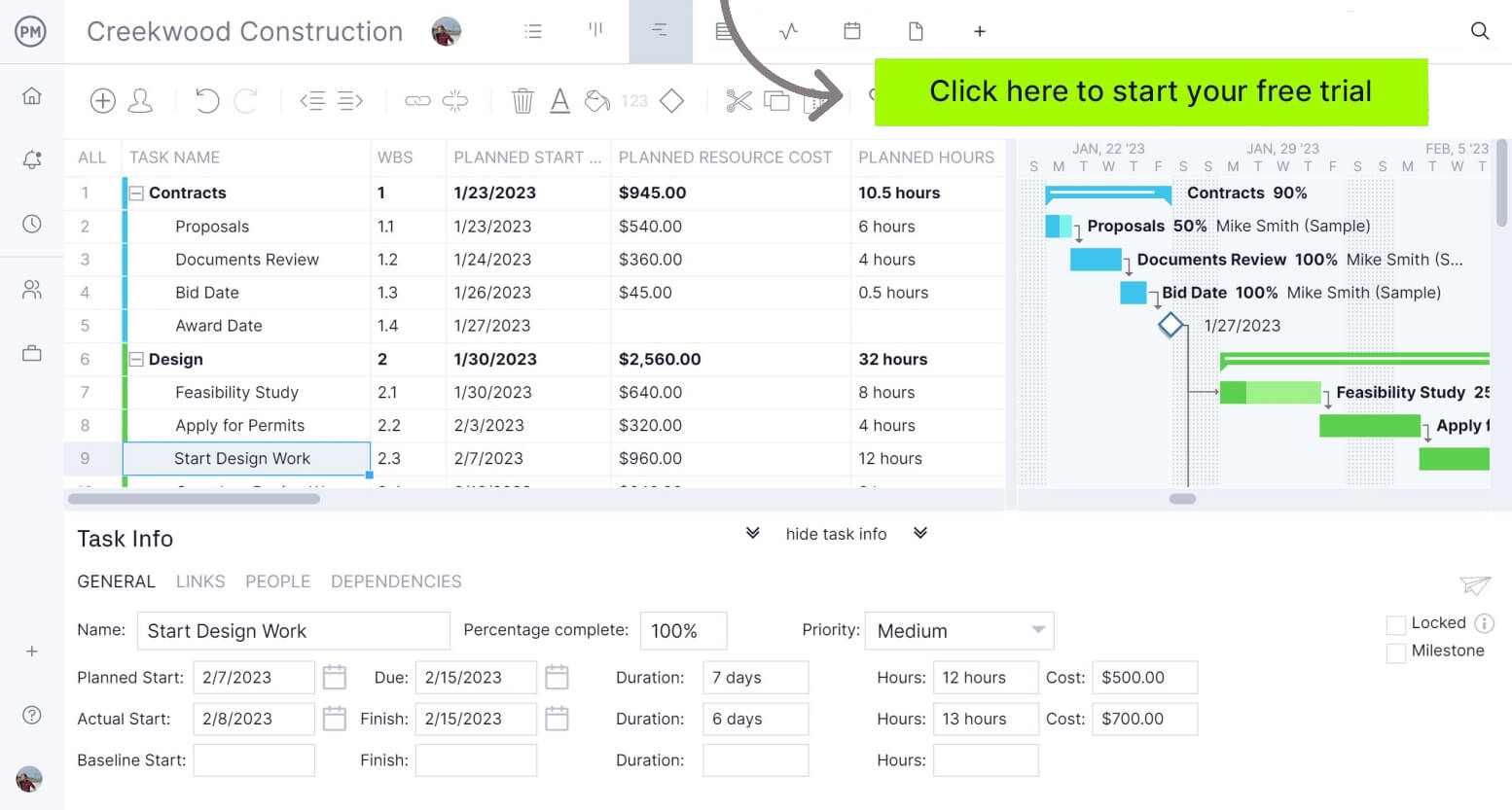
When to Use a Weekly Billing Format
A weekly billing format is ideal when projects require frequent invoicing to maintain steady cash flow and ensure timely payment for work performed. It’s especially useful for short-term contracts, ongoing service agreements or projects with rapidly changing requirements where tasks are completed and approved in quick succession.
It’s also beneficial for businesses that need to closely monitor budgets and expenses regularly. By invoicing weekly, teams can quickly identify scope changes, track profitability and address payment issues before they escalate. This format works well in industries like consulting, creative services and construction, where deliverables and billable hours can vary from week to week.
Who Should Use This Weekly Billing Format?
A weekly billing format is best suited for businesses and professionals who deliver work in short cycles and want to keep payments consistent. Freelancers, consultants and contractors often rely on it to maintain a steady income while providing clients with clear, up-to-date records of work completed.
Companies in industries like construction, IT services and marketing agencies also benefit when projects involve frequent deliverables or variable hours. This approach keeps both parties aligned on progress and costs, reducing misunderstandings and improving financial transparency throughout the project.
How to Use This Weekly Billing Format for Word
The weekly billing format provided in Word makes it simple to record billable hours, material costs and equipment usage for a single week so you can generate consistent invoices quickly. It includes sections for invoice dates, client and contractor contact information, line item labor charges, material costs, equipment charges and a calculated total, which helps maintain clear records for both your team and your clients. You can download and open the Word file to customize fields to match your company’s style and billing rules.
Step 1. Prepare the Weekly Billing Format
Open the Word doc and save a copy using a descriptive file name such as “Weekly Billing_Company_Client_Date.” Update header details like your company name, address, phone and email so every invoice is branded correctly. Confirm that the invoice date and payment due date fields reflect your billing terms to avoid confusion when sending invoices to clients.
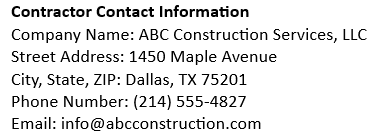
Step 2. Fill Client and Contract Information
Complete the client contact section with the customer name, address, phone and email so records are traceable. Enter the customer ID and invoice number in the designated fields to keep your billing sequence intact. If the project is tied to a contract or purchase order, include that reference to simplify reconciliation.

Step 3. Record Work Description
Summarize the week’s work in the work description area, including the project name, specific tasks and the date range covered. This helps the client understand what the invoice covers and links charges to deliverables, which reduces disputes and speeds payment.

Step 4. Log Labor Charges
Enter labor entries by date, role, task description, hours worked, hourly rate and total cost. Use one row per person, per date, to keep the breakdown clear. Double-check math on hours and rates so totals are accurate before moving on to materials and equipment.

Step 5. Add Material Costs
List materials used with the date, description, quantity, unit price and total cost. Include receipts or purchase records as attachments when needed. This level of detail supports expenses and helps clients approve charges faster.

Step 6. Add Equipment Costs
Record equipment usage including date, description, usage period, rate and total cost. Note whether the rate is hourly or daily and include any mileage or delivery fees, if applicable. Accurate equipment logs prevent billing disputes later.

Step 7. Calculate Subtotal, Taxes, Discounts and Total
Verify the subtotal by summing labor, material and equipment totals, then apply your tax rate and any discounts. Ensure the tax amount calculation is correct and display the final total prominently so the client knows the exact amount due.
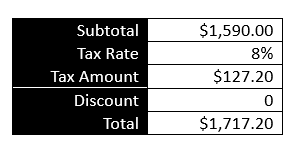
Step 8. Review Attachments and Notes
Attach supporting documents such as timesheets, receipts, photos or delivery tickets to the invoice file. Add a brief notes section for special instructions or clarifications about the charges. This helps the client approve the invoice without additional back and forth.
Step 9. Save and Send
Save the completed Word invoice as a PDF for distribution to ensure consistent formatting. Email the invoice to the client with a short message that references the invoice number, due date and any payment instructions. Track the sent invoice in your accounting or project management system for follow-up.
Step 10. Track Payment and Archive
Update your records when payment is received, noting the payment date, method and any reference numbers. Archive the invoice and attachments in a folder structure by client and date for future audits and reporting. Maintaining a consistent weekly billing format makes month-end reconciliation faster and more reliable.
Related Service Delivery Management Templates
A weekly billing format is only one of the many project management templates for Excel and Word that are available for free download immediately from our site. These free templates cover all aspects of managing a project. Below are just a few examples that can help with service delivery.
Service Proposal Template
Download this free service proposal template to outline the scope, approach, pricing and terms of a service you are offering to a potential client. It helps present your offer in a clear, professional and consistent way, saving time while ensuring no key details are overlooked. By using a template, businesses can standardize proposals, improve clarity for clients and increase the chances of winning new work.
Service Blueprint Template
Use this free service blueprint template to visually map out the key elements of a service, including customer interactions, frontstage activities, backstage processes and supporting resources. It helps organizations understand how services are delivered from start to finish, identify potential bottlenecks and improve efficiency.
Service Quote Template
This free service quote template outlines the cost and details of services a business offers to a client. It includes a description of the work, pricing, terms of payment and the timeline for completion. Using a template ensures consistency, saves time and helps clients understand exactly what they will receive and how much it will cost.
ProjectManager Is a Better Service Delivery Tool Than Templates
Templates may provide a starting point, but they quickly fall short when projects become complex or timelines shift. ProjectManager replaces static sheets with multiple dynamic project views that adapt as work moves forward.
From the detailed task list to the flexible sheet, calendar and kanban views, your team can see and manage work in the way that makes the most sense. No more flipping between documents or trying to interpret outdated information—everything you need is live, organized and instantly accessible.
Optimize Resource Management
Take control of your team’s workload with our resource management tools. See who is available, assign tasks based on capacity and prevent bottlenecks before they happen. Visual indicators and workload charts ensure every team member is productive without being overloaded.
The team page provides a daily or weekly overview of their activity, which can be updated without leaving the page. Unlike a template that only shows static assignments, we keep your resources balanced and your service delivery running smoothly.
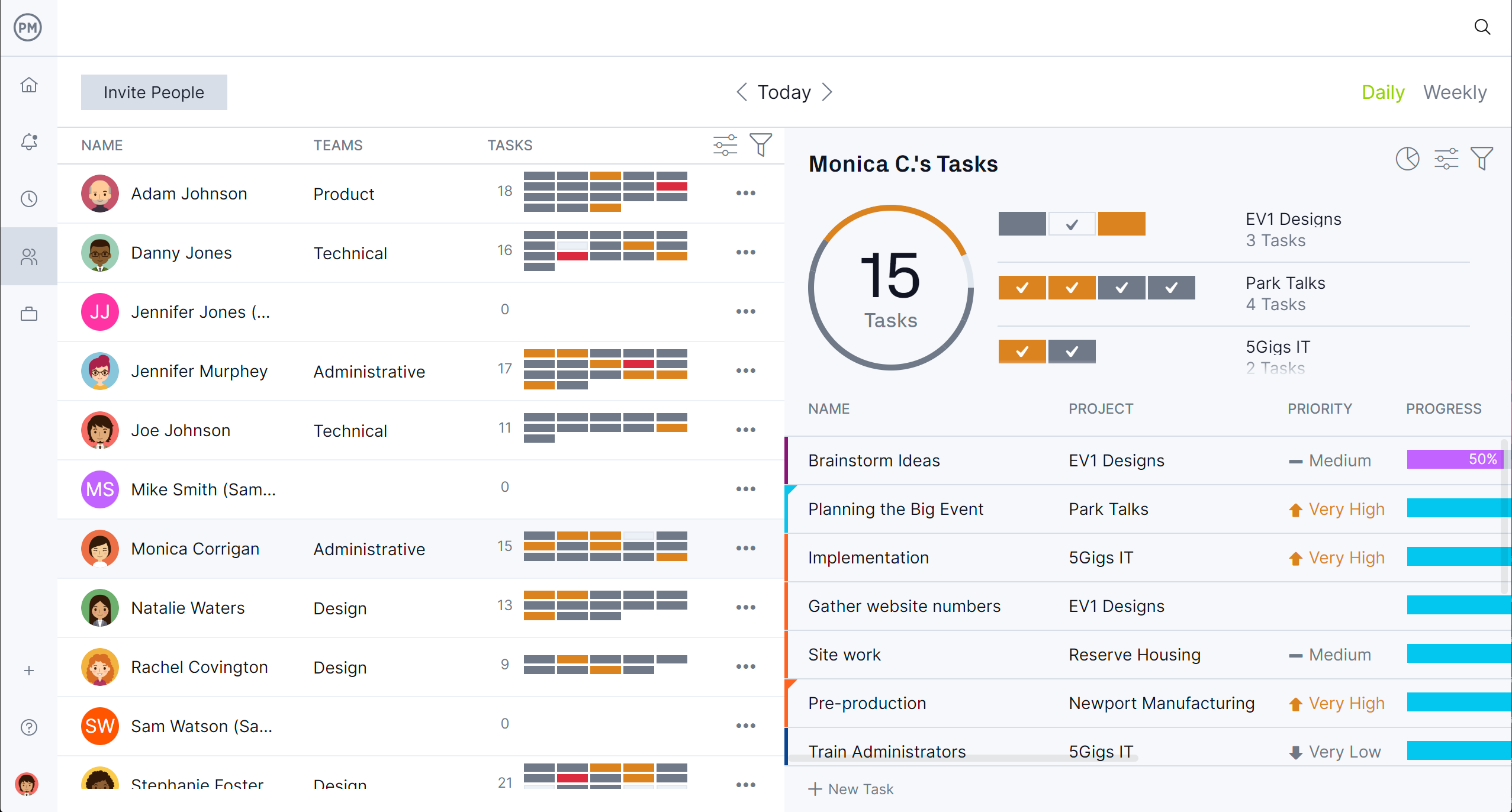
Enhance Tracking
Stop guessing and start knowing with real-time tracking across every project. Real-time project and portfolio dashboards and reports give instant insight into task progress, deadlines and overall project health. Identify delays, adjust priorities and keep stakeholders informed—all without manually updating a spreadsheet.
Secure timesheets can be updated from the field with our mobile app and help track labor costs. Our tracking features aren’t just a record of what happened; they keep services on schedule and teams accountable.
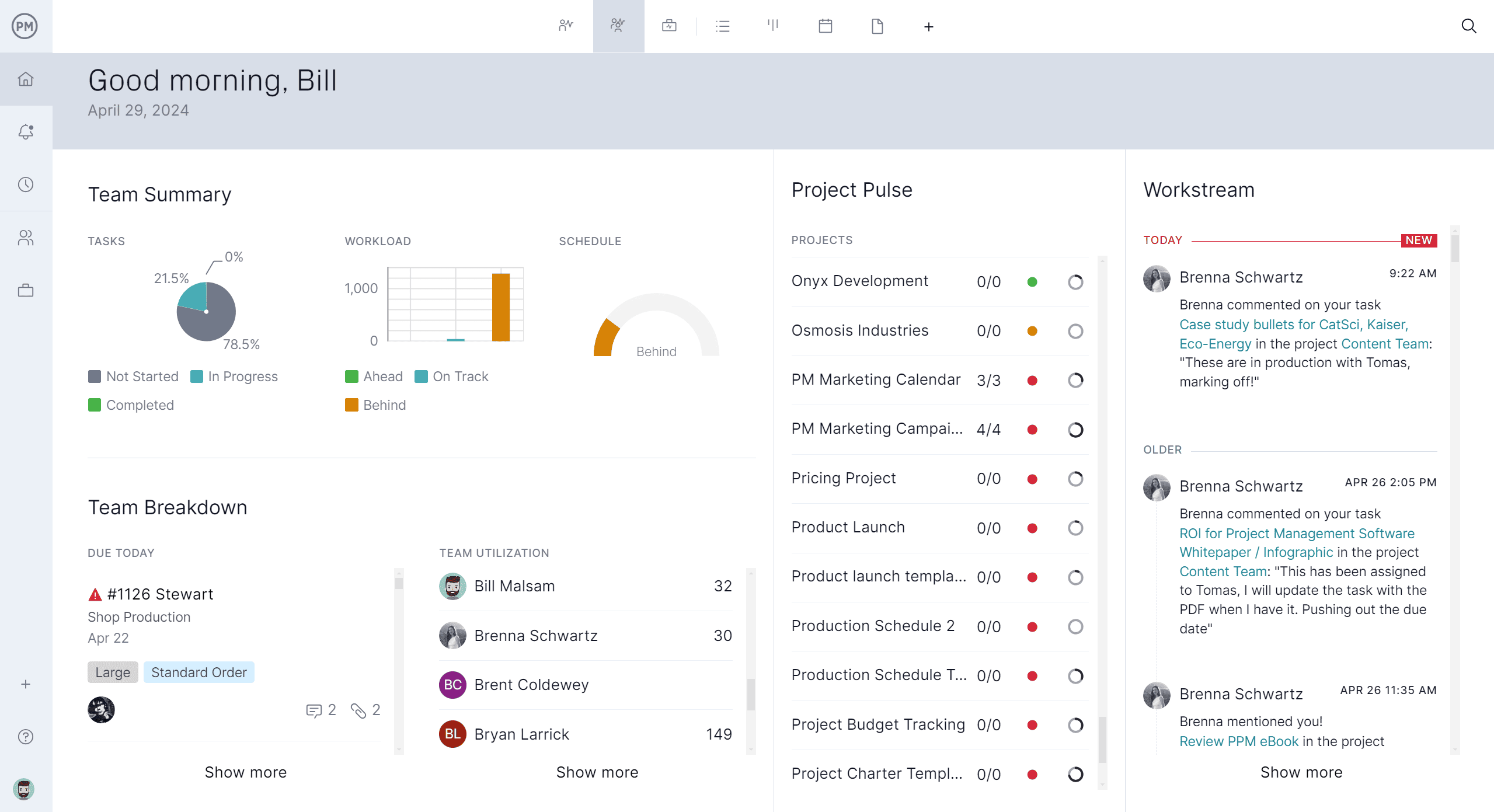
Related Service Delivery Management Content
Looking to learn more about service delivery management beyond a weekly billing format? You’ve come to the right place. We publish weekly blogs, tutorial videos and tons of free templates. Below are just a few that relate to the topic.
- Field Service Management: Key Areas, Challenges & Tools
- Project Management for Professional Services Providers
- Professional Services Project Management Software
- Client Management: How to Win and Retain Clients
- What Is a Service-Level Agreement? (Examples & Template Included)
- Client Management: How to Win and Retain Clients
- Service-Level Agreement Template
- Service Report Template
ProjectManager is online project and portfolio management software that connects teams, whether they’re in the office or out in the field. They can share files, comment at the task level and stay updated with email and in-app notifications. Join teams at Avis, Nestle and Siemens who are using our software to deliver successful projects. Get started with ProjectManager today for free.
